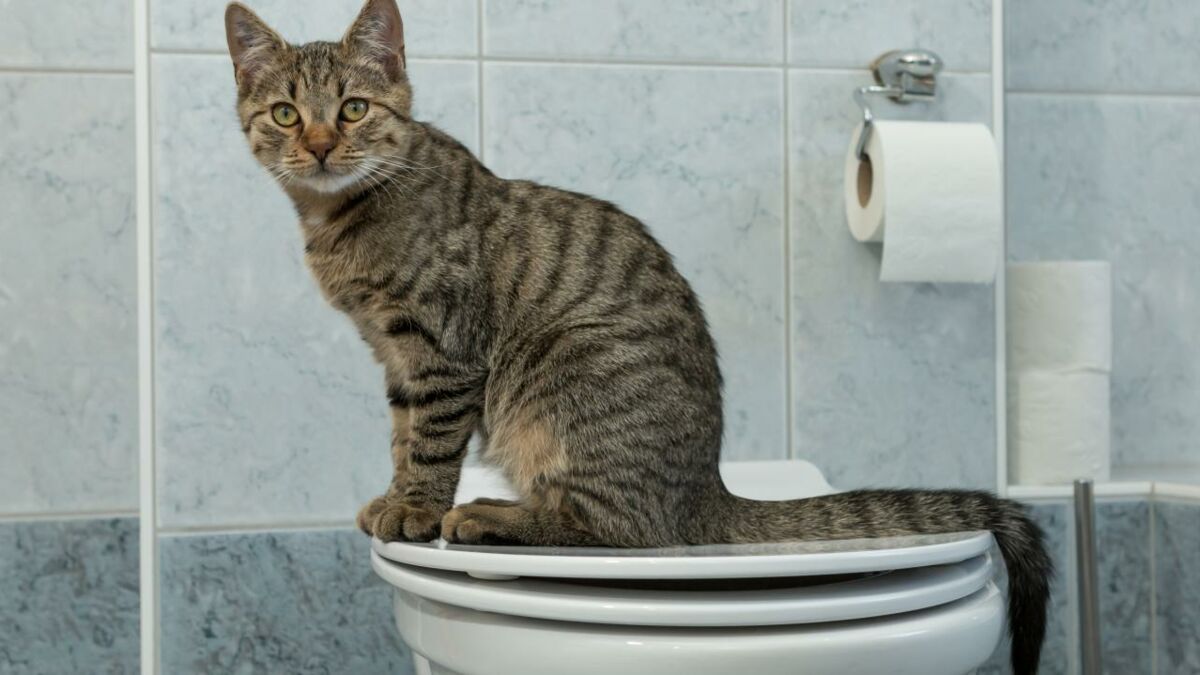Potential Risks of Flushing Cat Poop Down Your Toilet - Tips for Safer Handling
Potential Risks of Flushing Cat Poop Down Your Toilet - Tips for Safer Handling
Blog Article
Are you currently trying to find information and facts on Can You Flush Cat Poo or Litter Down the Toilet??

Introduction
As cat owners, it's important to be mindful of how we take care of our feline friends' waste. While it may appear convenient to flush feline poop down the toilet, this technique can have detrimental effects for both the atmosphere and human health.
Alternatives to Flushing
The good news is, there are more secure and more responsible means to dispose of cat poop. Take into consideration the complying with alternatives:
1. Scoop and Dispose in Trash
One of the most typical method of getting rid of cat poop is to scoop it into a biodegradable bag and throw it in the trash. Make sure to utilize a specialized litter inside story and deal with the waste quickly.
2. Usage Biodegradable Litter
Select eco-friendly cat clutter made from materials such as corn or wheat. These clutters are eco-friendly and can be securely taken care of in the trash.
3. Bury in the Yard
If you have a yard, think about hiding cat waste in an assigned location far from vegetable yards and water resources. Be sure to dig deep enough to prevent contamination of groundwater.
4. Set Up a Pet Waste Disposal System
Buy a pet waste disposal system especially developed for cat waste. These systems utilize enzymes to break down the waste, reducing odor and environmental impact.
Health Risks
Along with environmental issues, flushing pet cat waste can additionally present health dangers to humans. Pet cat feces might include Toxoplasma gondii, a bloodsucker that can cause toxoplasmosis-- a potentially serious disease, specifically for pregnant ladies and people with weakened immune systems.
Environmental Impact
Purging feline poop introduces hazardous pathogens and parasites into the water, positioning a significant risk to marine environments. These contaminants can adversely impact marine life and concession water high quality.
Conclusion
Accountable pet possession prolongs past offering food and shelter-- it also involves appropriate waste monitoring. By avoiding flushing pet cat poop down the commode and selecting alternate disposal methods, we can lessen our ecological impact and secure human wellness.
Why Can’t I Flush Cat Poop?
It Spreads a Parasite
Cats are frequently infected with a parasite called toxoplasma gondii. The parasite causes an infection called toxoplasmosis. It is usually harmless to cats. The parasite only uses cat poop as a host for its eggs. Otherwise, the cat’s immune system usually keeps the infection at low enough levels to maintain its own health. But it does not stop the develop of eggs. These eggs are tiny and surprisingly tough. They may survive for a year before they begin to grow. But that’s the problem.
Our wastewater system is not designed to deal with toxoplasmosis eggs. Instead, most eggs will flush from your toilet into sewers and wastewater management plants. After the sewage is treated for many other harmful things in it, it is typically released into local rivers, lakes, or oceans. Here, the toxoplasmosis eggs can find new hosts, including starfish, crabs, otters, and many other wildlife. For many, this is a significant risk to their health. Toxoplasmosis can also end up infecting water sources that are important for agriculture, which means our deer, pigs, and sheep can get infected too.
Is There Risk to Humans?
There can be a risk to human life from flushing cat poop down the toilet. If you do so, the parasites from your cat’s poop can end up in shellfish, game animals, or livestock. If this meat is then served raw or undercooked, the people who eat it can get sick.
In fact, according to the CDC, 40 million people in the United States are infected with toxoplasma gondii. They get it from exposure to infected seafood, or from some kind of cat poop contamination, like drinking from a stream that is contaminated or touching anything that has come into contact with cat poop. That includes just cleaning a cat litter box.
Most people who get infected with these parasites will not develop any symptoms. However, for pregnant women or for those with compromised immune systems, the parasite can cause severe health problems.
How to Handle Cat Poop
The best way to handle cat poop is actually to clean the box more often. The eggs that the parasite sheds will not become active until one to five days after the cat poops. That means that if you clean daily, you’re much less likely to come into direct contact with infectious eggs.
That said, always dispose of cat poop in the garbage and not down the toilet. Wash your hands before and after you clean the litter box, and bring the bag of poop right outside to your garbage bins.
https://trenchlesssolutionsusa.com/why-cant-i-flush-cat-poop/

I am just very curious about Can You Flush Cat Poop Down The Toilet? and I'm hoping you liked our article. Do you know about somebody who is very much interested in the niche? Please feel free to promote it. I value reading our article about Can You Flush Cat Poo or Litter Down the Toilet?.
Visit Website Report this page